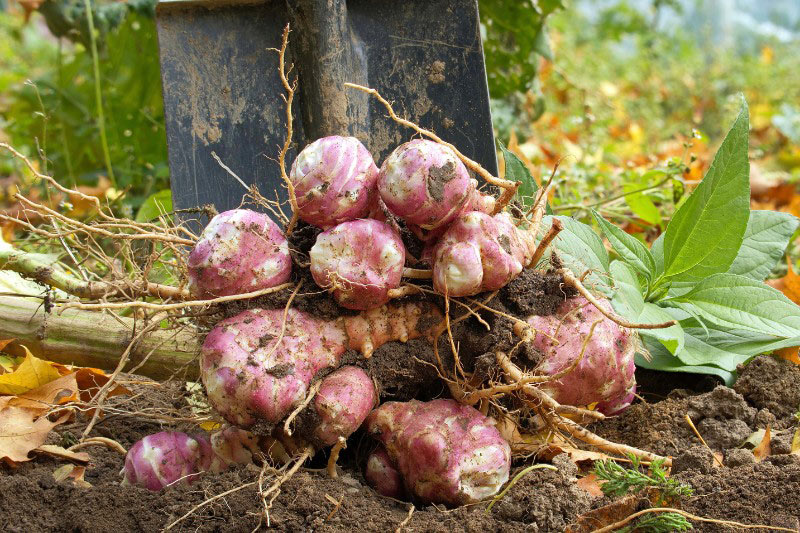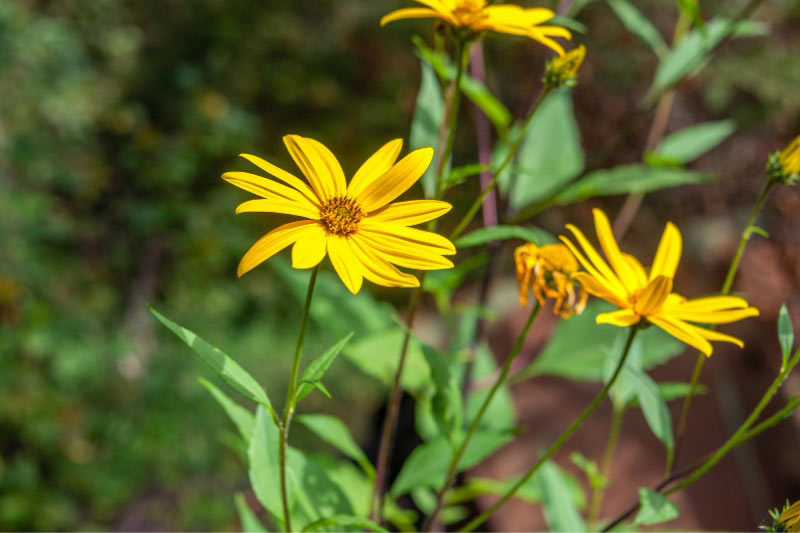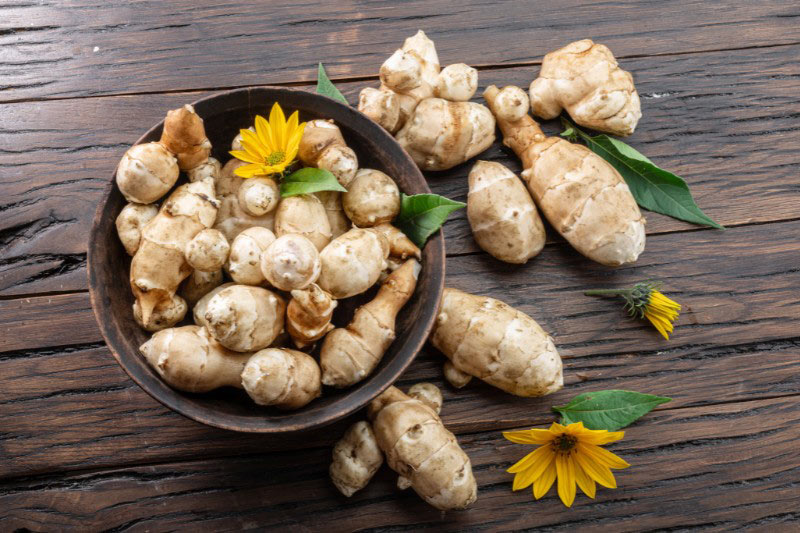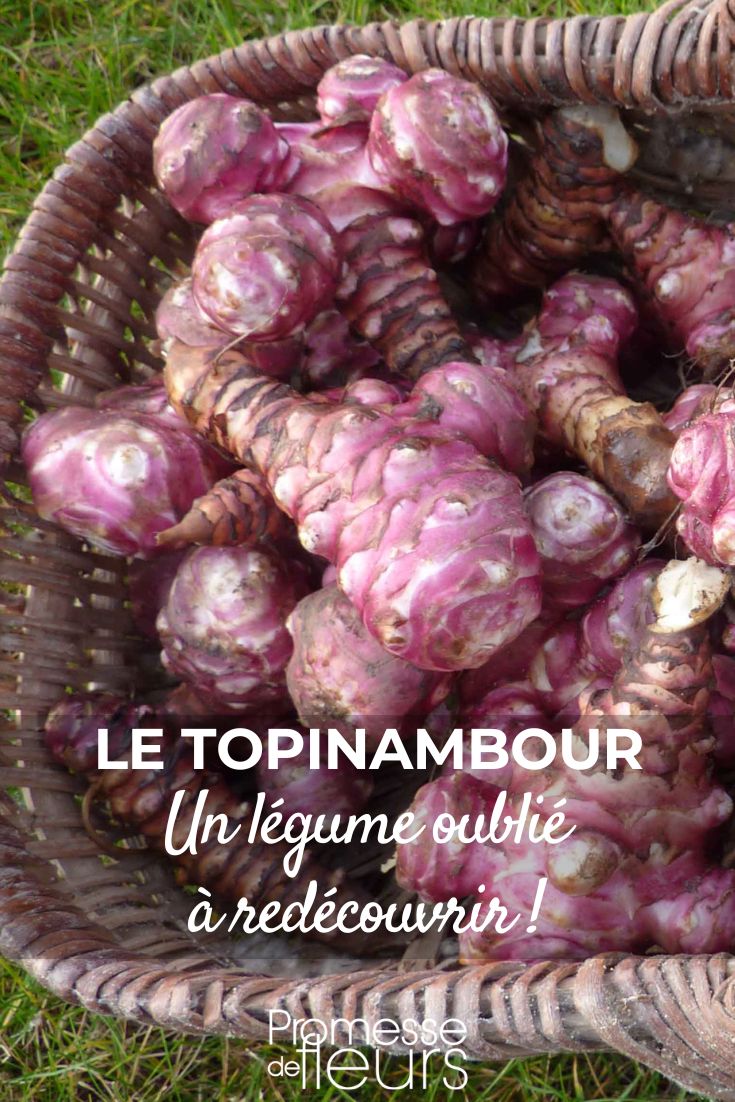An overlooked vegetable, the Jerusalem artichoke, also known as Earth pear, Jerusalem artichoke, or Canadian truffle, is a root vegetable and perennial, cultivated for its edible tuber. Long dethroned in favour of the potato, it is now making a grand return to the vegetable garden and our plates! We explain why it is generating so much interest, what its qualities are, and how to grow it.
To learn everything about the Jerusalem artichoke and its cultivation, check out our complete guide: "Jerusalem Artichoke: planting, harvest, cultivation".
What is the Jerusalem artichoke?
The Jerusalem artichoke or Helianthus tuberosus is a perennial plant from the Asteraceae family originating from the central United States, where it was cultivated by Native American tribes. It was imported to France in 1607 and was widely consumed during World War II, as it was not requisitioned by the Germans, unlike the potato. It was later dethroned in favour of the latter, probably because it was associated with that dark period and synonymous with famine.
The Jerusalem artichoke forms large clumps reaching heights of 2.5 m to 3 m (but there are also dwarf varieties that do not exceed 50 cm in height). Its long, upright, rough stems bear dark green, oval to lanceolate leaves, 10 to 20 cm long, and at their top, from August to October, lovely yellow flowers resembling those of the sunflower, which belongs to the same family. It produces fleshy, nodose tubers that resemble ginger roots. This very vigorous plant spreads quickly thanks to its tubers, making it somewhat invasive. The Jerusalem artichoke is also closely related to Helianthus, another forgotten vegetable.
There are many varieties of Jerusalem artichoke, offering different shapes and colours of tubers, as well as different flavours. The variety 'Culinary Spindle', for example, is distinguished by its elongated, beige tubers with a slightly sweet flesh. There are also pink Jerusalem artichokes or purple ones.

Why is the Jerusalem artichoke back in the spotlight?
The Jerusalem artichoke is back in the limelight for several reasons:
- Its taste qualities: The tubers of the Jerusalem artichoke have a delicate flavour reminiscent of artichoke, water chestnut, or salsify, with a slight sweetness. The Jerusalem artichoke is now being rehabilitated by top chefs. The famous Michelin-starred chef Alain Ducasse makes a delicious velouté from it.
- Its nutritional qualities: The Jerusalem artichoke is reputed to be rich in fibre, phosphorus, potassium, iron, and B vitamins. It contains no starch. Although it has a slightly sweet taste, this is due to the presence of inulin, a natural fibre that does not affect blood sugar levels: the Jerusalem artichoke is therefore particularly suitable for diabetes. Additionally, inulin has the advantage of helping to regulate transit. Low in calories, the Jerusalem artichoke contains only 60 to 80 kcal per 100 g.
- Its ease of cultivation: In addition to being a perennial vegetable, the Jerusalem artichoke is very easy to grow. It even tends to be a bit invasive! However, there are now dwarf varieties that adapt to pot cultivation, which can be placed, for example, on a terrace. The Jerusalem artichoke is also perfectly hardy.
- Its productivity: The Jerusalem artichoke is very productive, even in poor soils. It can yield up to 3 kg of tubers per square metre under ideal conditions.
Adding to this is its lovely yellow flowering, which makes it a very ornamental plant! The Jerusalem artichoke will fit wonderfully into a productive ornamental garden, both beautiful and productive.

How to grow it?
The tubers are planted from February to June, for a harvest from November to March. The Jerusalem artichoke thrives in full sun or partial shade and prefers light, well-drained soils that are fairly rich in humus. However, it grows in any type of soil as long as it is sufficiently draining. For more information, feel free to consult our advice sheet "Planting Jerusalem artichokes".
Being somewhat invasive, it is important to allocate an appropriate space for the Jerusalem artichoke. Place it away from the vegetable garden (where it might smother other vegetables), for example, in a neglected corner of the garden. The dwarf varieties, which generally do not exceed 50 cm in height, can be planted in pots and are particularly suited for small gardens.
The tubers are harvested about 7 months after planting. Dig them up with a fork as needed. Once harvested, they do not keep well (only 2 to 3 days in the refrigerator), so it is better to only take what you need. It is also because the tubers do not store well that they are very rarely sold commercially… All the more reason to grow the Jerusalem artichoke in your garden!
How to cook it?
The tubers of the Jerusalem artichoke are usually peeled before consumption, but they can also be rinsed or brushed to remove dirt. The largest and least knobby tubers are obviously easier to peel. To prevent their flesh from oxidising and turning brown, you can soak them in water mixed with lemon juice. It is best to consume the Jerusalem artichoke in small quantities, as it has carminative properties and can be somewhat difficult to digest.
The Jerusalem artichoke lends itself to many recipes! Here are some suggestions for cooking it:
- In salad: sliced or grated, like carrots, dressed with vinaigrette, for example.
- In gratin: you can make a variation of gratin dauphinois by replacing the potatoes with Jerusalem artichokes.
- In soup or velouté: with fresh cream and roasted hazelnuts.
- Sautéed: with potatoes, mushrooms, and onions. You can enhance your dish with garlic, herbs de Provence...
- In purée: combine them with potatoes to make a delicious purée. Season with cumin and nutmeg.
- Baked: you can roast Jerusalem artichokes, seasoned with thyme, for example.

































Comments